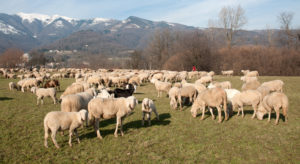
A recently published scientific study paves the way for better reporting of wool’s environmental performance, proposing a new set of methods for use in life cycle assessments of wool where wool is produced alongside meat or milk. Known as dual or co-production systems, many sheep farms produce both meat and wool. Existing life cycle assessments (LCAs), the study found, produce widely different results depending on the method used in dividing the environmental impact between these two products. But as interest in the environmental impacts of livestock increases, accurate and consistent results for both sheep meat and wool production are needed. It is particularly important that global benchmarking systems for wool are based on technically sound and transparent methodology.
The solution lies, the researchers say, in using a method that allocates environmental impact on the basis of the protein requirements for wool and meat production. As both meat and wool are protein-based products, and wool production is largely determined by protein requirements, this is a logical basis for allocation.
The method also has the benefit of generating results for environmental indicators such as greenhouse gas emissions and use of water resources, which that are causally tied to production of wool and meat.
Funded by the Australian Government and Australian wool growers through Australian Wool Innovation, the study marks a substantial contribution to the body of scientific literature on LCA.




